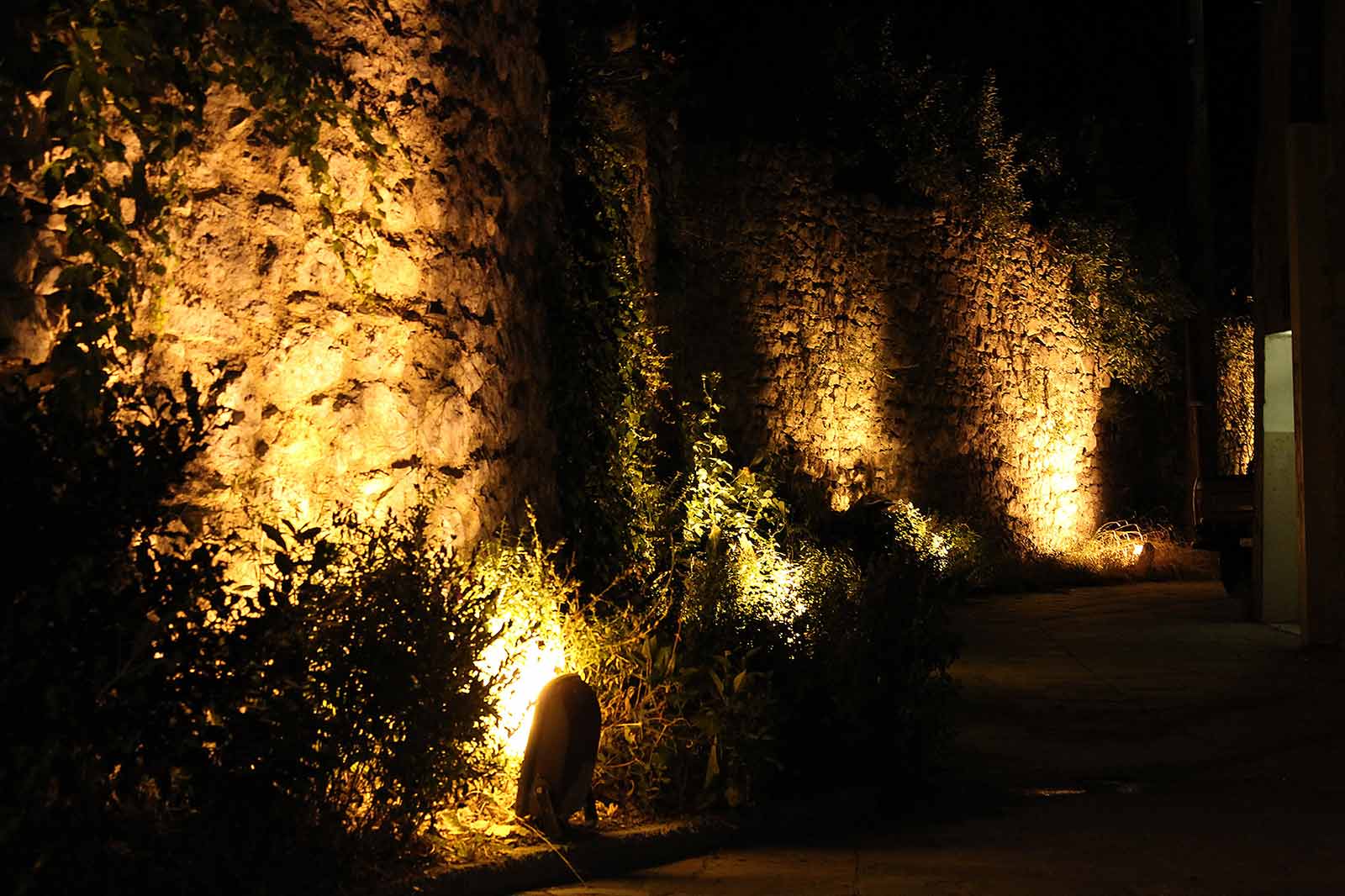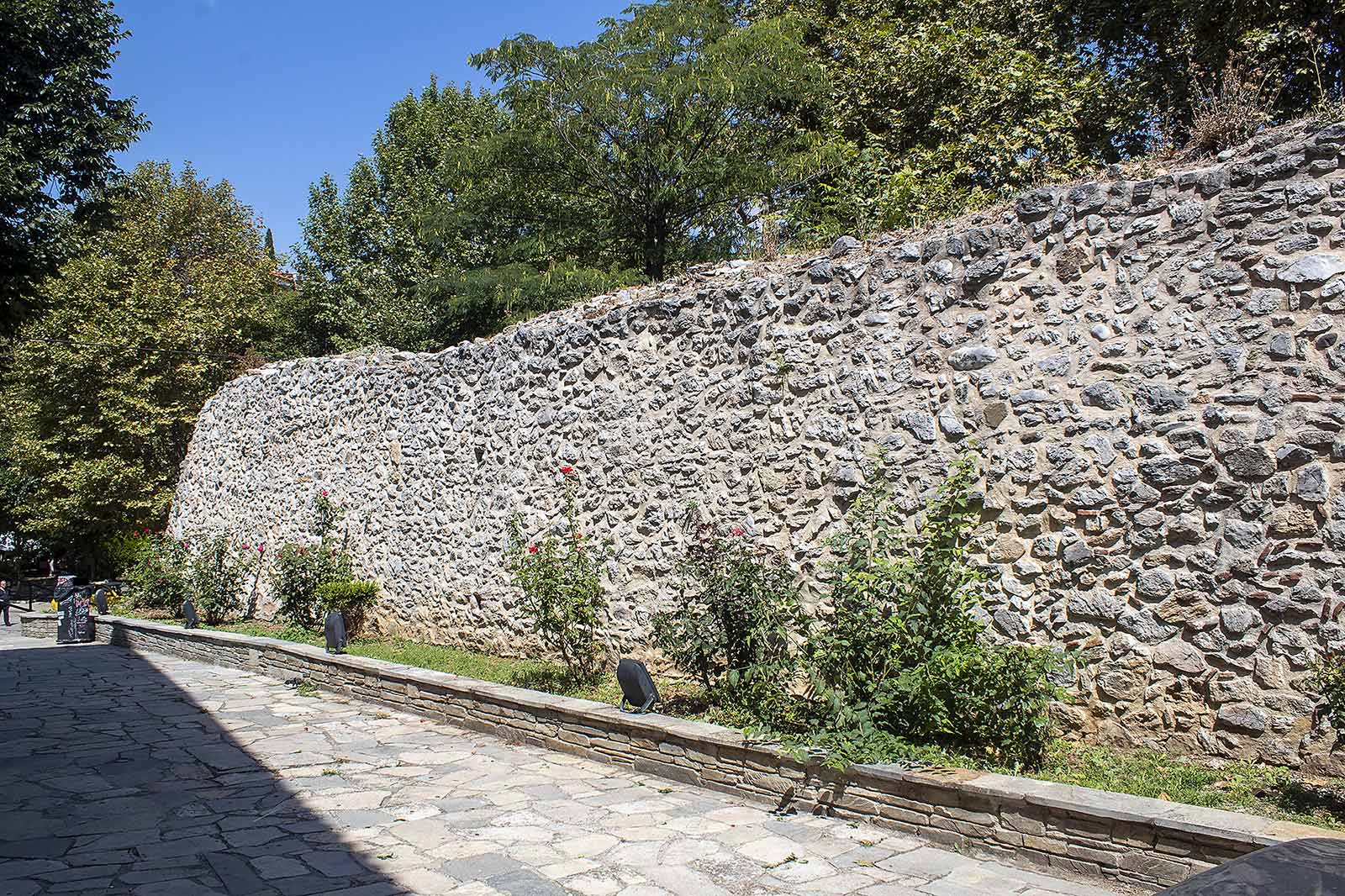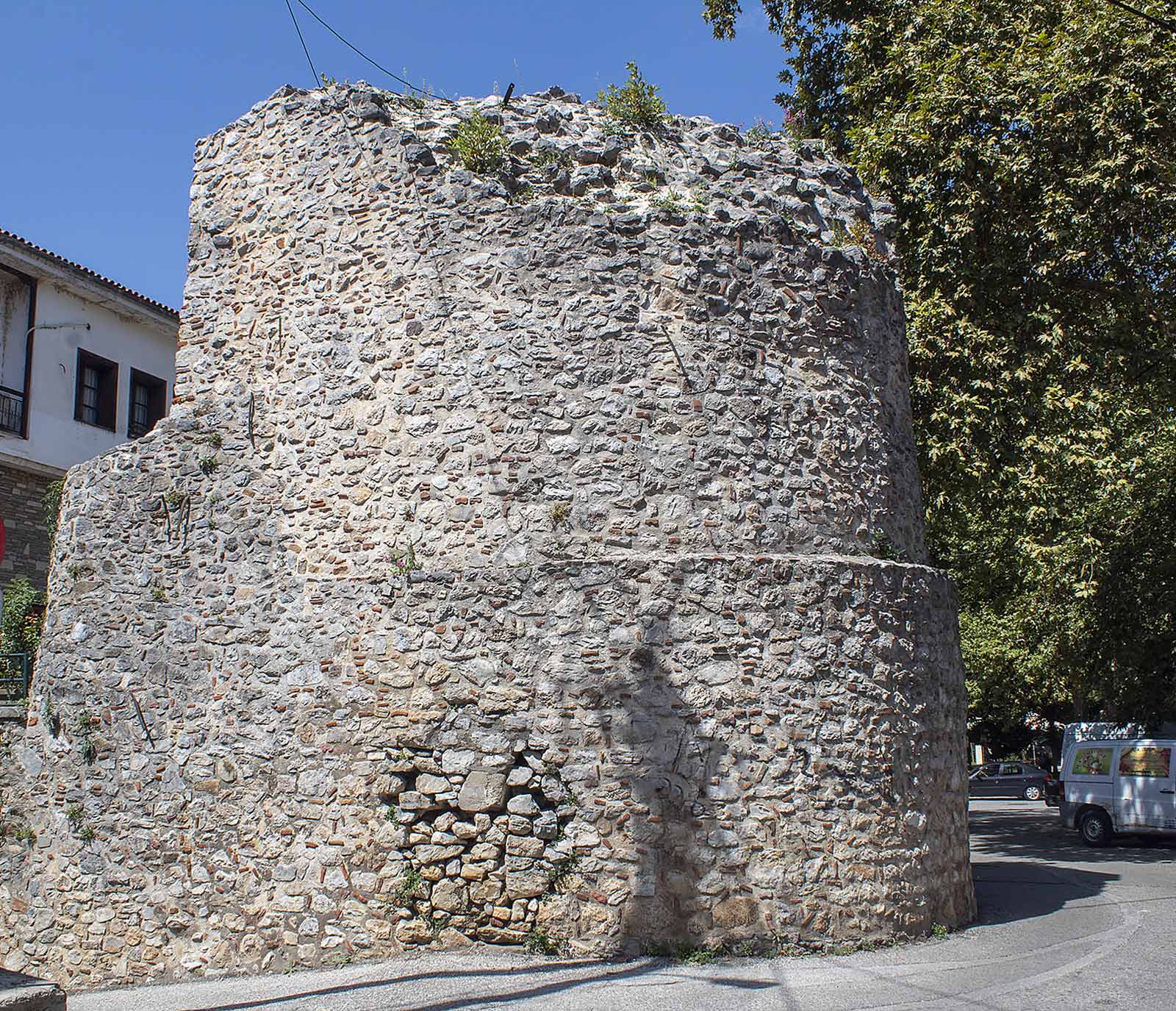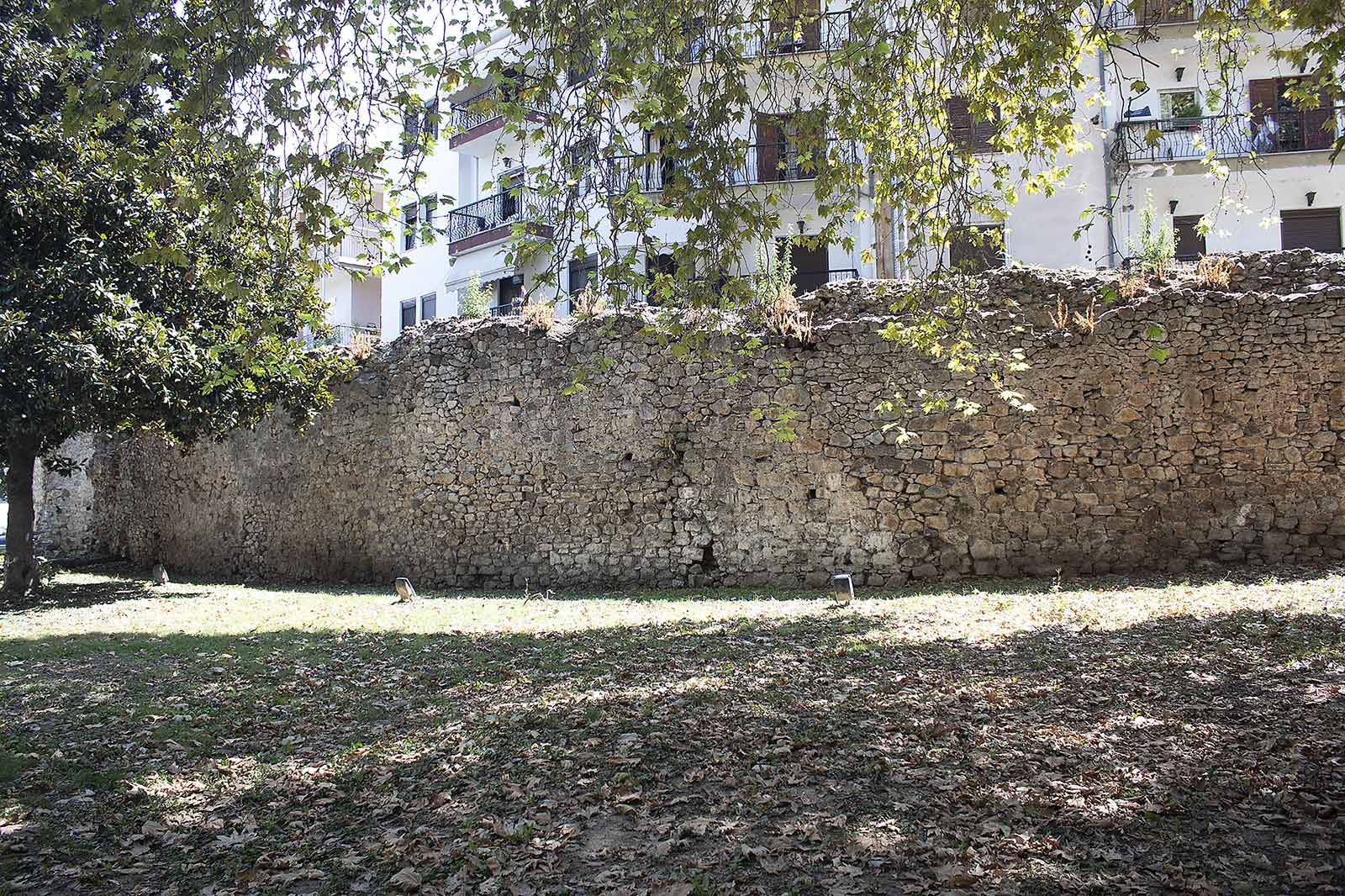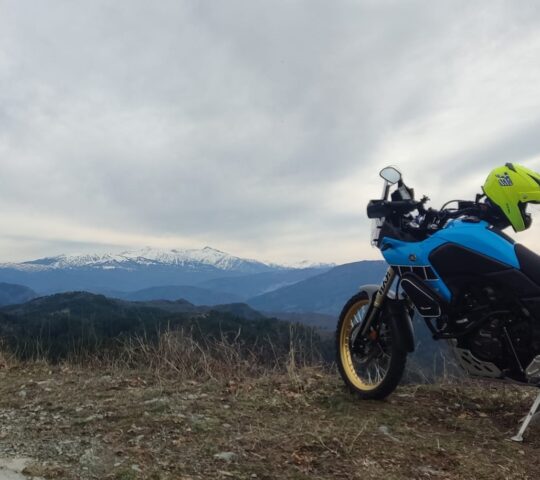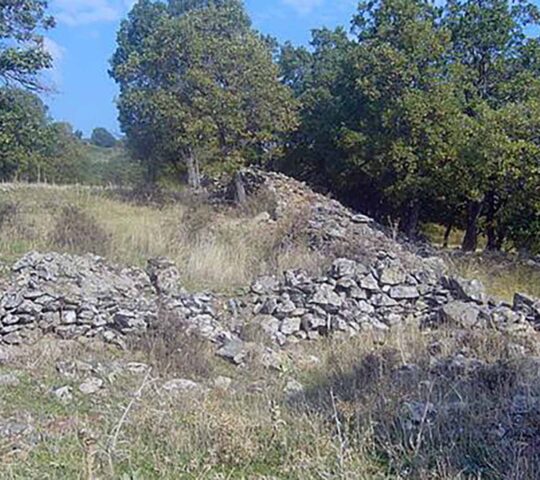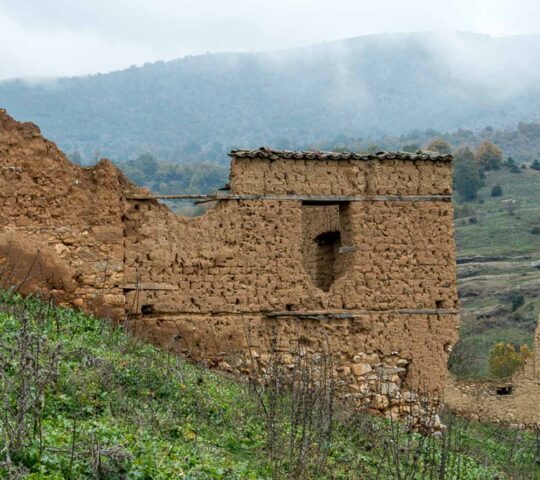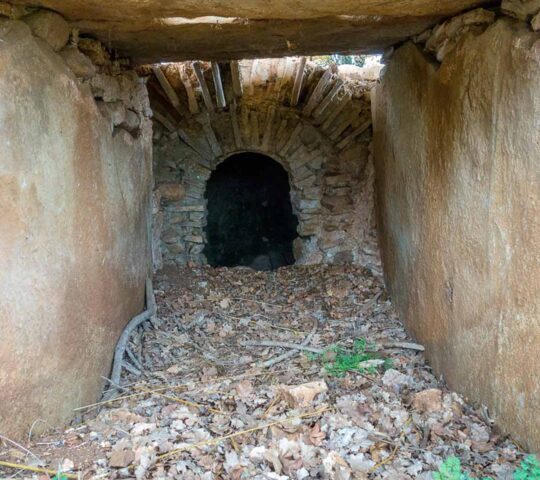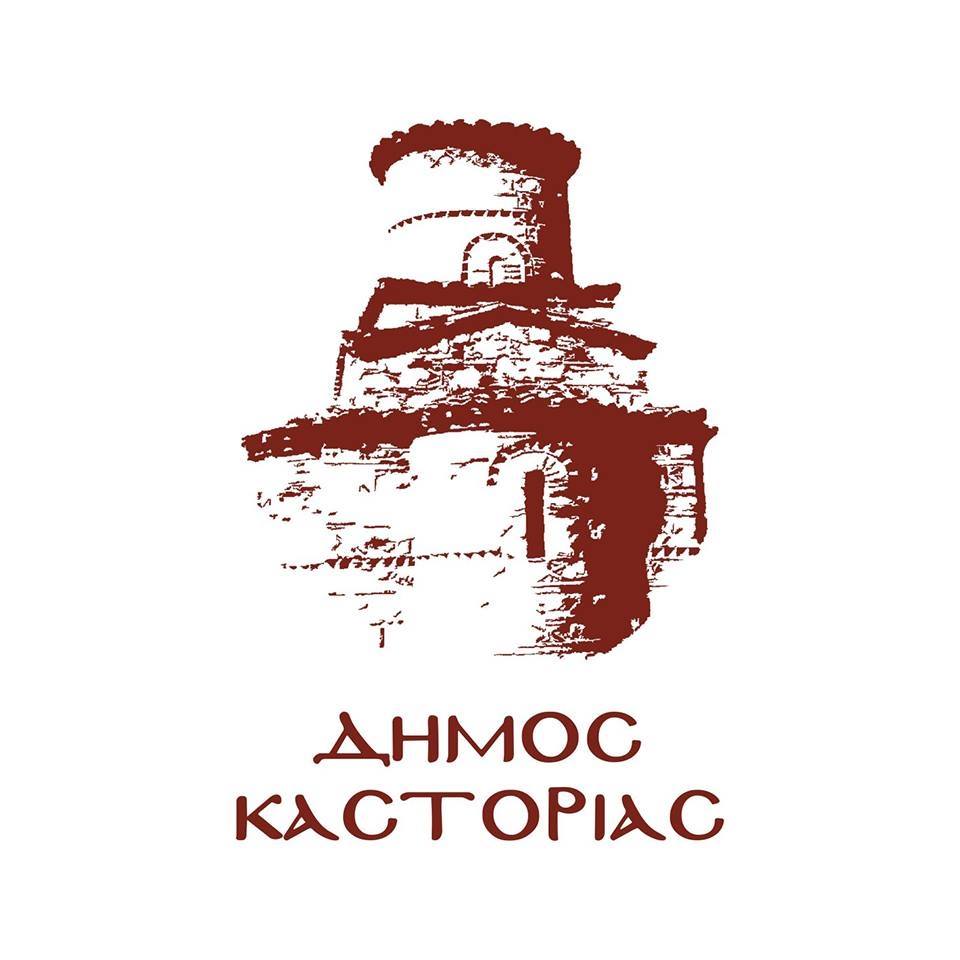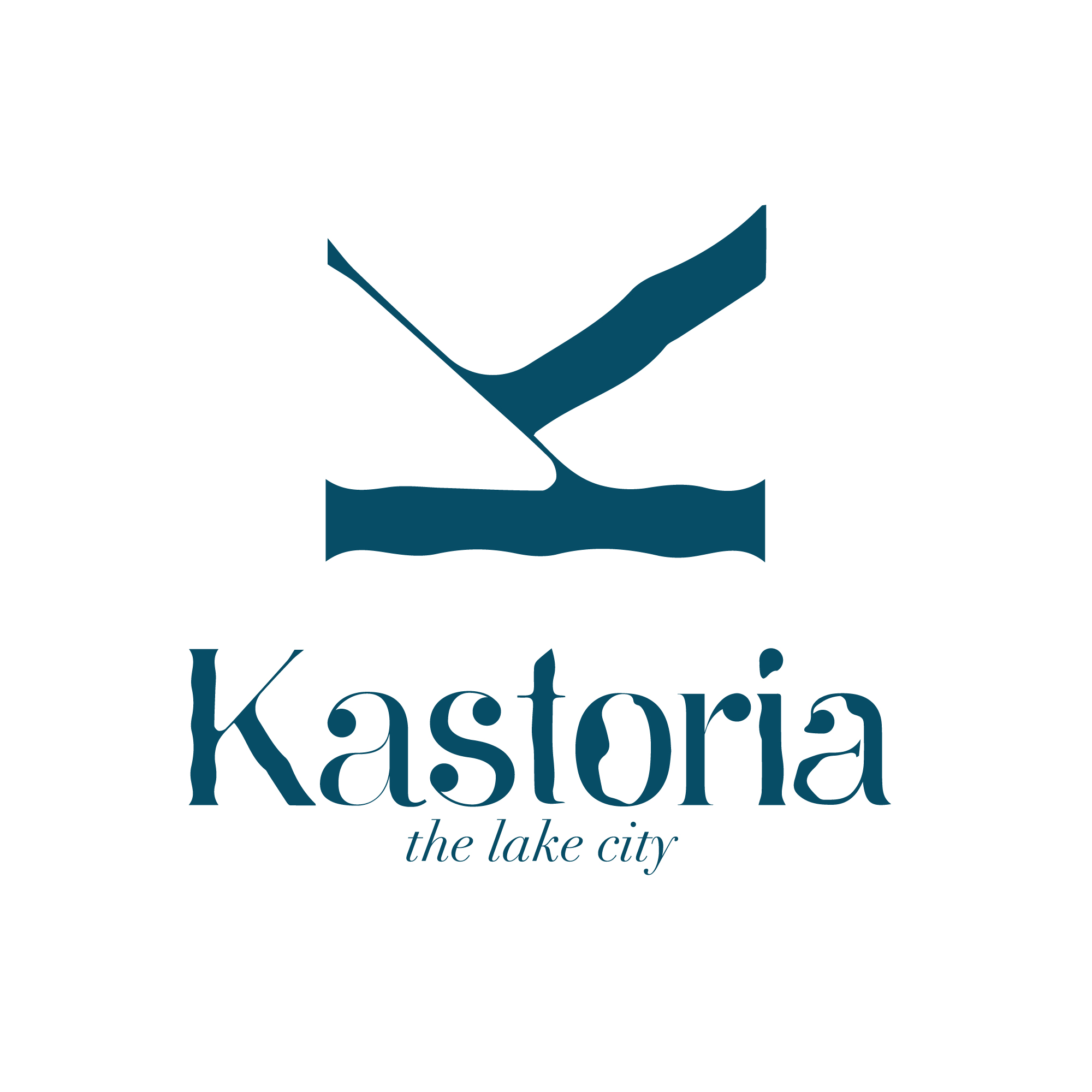Byzantine Walls
Hightlight
-
 Parking
Parking
The walls of the city of Kastoria are now a remnant of its fortification system. In several places in the city some parts are preserved in an altered state (near the Town Hall, the Prefecture, the Acropolis-Koumbelidiki, Papareska). In the past, however, until the years of the Second World War, they were kept in a better condition. The dating of the walls is not an easy task, but several scholars place their construction in the time of the Emperor Justinian.
The main gate, called in the Turkish occupation “Exoporta” or “Megali Porta” (Outer door or Great Door), was located in Davaki Square, while the two other gates of the neck walls were located one just in front of the present Town Hall and the other one to the south of the preserved Turkish Madrrassa.
The walls of Kastoria, as preserved today, especially the semi-circular towers and especially one (of the two that must have existed) that belonged to the pillar, the only one in the city, in the old Psaragora (Fishmarket), are a typical example of fortification of the 9th-10th century.
The main gate was located on the northern bank of the peninsula, the central gate, the ‘Exoporta’ or ‘Megali Porta’, was located in Davakis Square, while the advantage resulting from the difference in altitude of this position made it easier for the defenders to deal with raiders approaching the gate. From the central gate there were two uphill roads that ran along the first ridge and basically followed the lines of the present-day Mitropoleos and Agios Athanasios streets. The two gates of the neck walls were located one directly in front of the present Town Hall and the other to the south of the preserved Turkish madrrassa.
The city of Kastoria was gradually fortified and its fortifications underwent several renovations. In the 6th century, during Justinian’s reign, special emphasis seems to have been placed on the fortification of the isthmus of the peninsula, which was the most vulnerable point and was protected by high towers. It is possible that there was also a trench in front of the wall, which turned the peninsula into an island.



